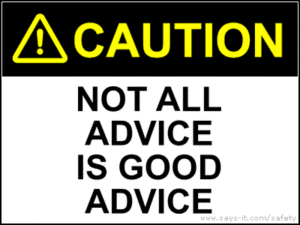I am sure you can argue with this one.
Sometimes a board member is valuable in teaching the “how” to get things done inside the company. But experience reinforces the usual fact that a board member telling the CEO or founder “how” to perform a function crosses a line and can diminish the CEO’s confidence and denigrates his or her ability, often in front of the board itself.
Let’s start with the vision for the enterprise
Who is responsible for the vision that drives the company? This is arguably the primary job of the CEO, with agreement from the board. Many entrepreneurs after taking outside investment defer to their board for matters of direction that include setting the vision, as well as executing the plan.
job of the CEO, with agreement from the board. Many entrepreneurs after taking outside investment defer to their board for matters of direction that include setting the vision, as well as executing the plan.
The general rule for founders and CEO’s with a board
Here is a general rule: The CEO sets the sails and points the ship, creating the vision for the company. The board provides input into that vision, testing it against their experience and reason, and challenges it as a part of its duty to protect the shareholders and care for the corporate asset. The board then assures that management receives or has resources to affect the vision, monitoring progress at each step.
What the board does not do
[Email readers, continue here…] The board does not get involved in how the job is done, but rather why it should be done and perhaps when it should be completed.
How a board member can harm the CEO
Once the members, unless invited in a consulting role, involve themselves in execution of the plan, management is robbed of its principle responsibility – execution of the plan approved by the board. When that happens, even a good CEO will pause and defer to the board before making strategic operational decisions, slowing the progress, perhaps endangering the company, by allowing competition to gain ground, and sometimes ceding some control to board members who are remote from the operation and may not be the wisest of advisers in each situation.
While we are on the subject, next up will be how to handle a dysfunctional board. Stay tuned…









This is good stuff Dave. Realize it geared toward for profit but can easily apply to non-profits. Enjoy your articles. Hope all is well.
Jim
Jim Rushton, CFRE – Senior Business Development Officer and Team Lead
Summit High Adventure Base
BOY SCOUTS OF AMERICA